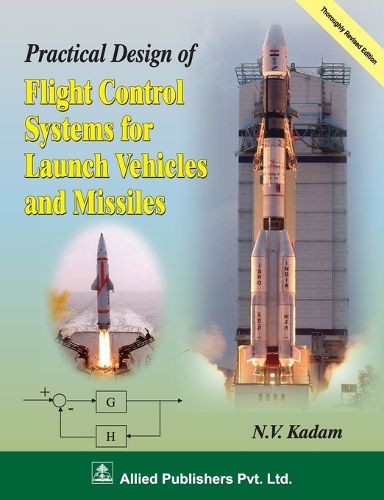Readings Newsletter
Become a Readings Member to make your shopping experience even easier.
Sign in or sign up for free!
You’re not far away from qualifying for FREE standard shipping within Australia
You’ve qualified for FREE standard shipping within Australia
The cart is loading…






This title is printed to order. This book may have been self-published. If so, we cannot guarantee the quality of the content. In the main most books will have gone through the editing process however some may not. We therefore suggest that you be aware of this before ordering this book. If in doubt check either the author or publisher’s details as we are unable to accept any returns unless they are faulty. Please contact us if you have any questions.
This book presents a clear, concise, and practical approach to the Design of Flight Control Systems for Launch Vehicles and Missiles. It encompasses a wide range of critical topics that a control system designer must understand. Beginning with mission-specific considerations, the book outlines the control requirements across different phases of flight trajectories and explains the use of various types of control effectors.
A distinctive feature of this book is its introduction of generalized equations of motion, including an innovative method for incorporating structural flexibility and propellant sloshing. This method simplifies the process by avoiding rederivation, offering a straightforward, intuitive way to model slosh dynamics and gimballed engine behavior.
The book further explores control system configurations, power plant sizing, linearized loop design, and the analysis and design of on-off reaction control systems. It includes practical insights into software features essential for real-time implementation, strategies to ensure robustness against system malfunctions, and validation techniques such as comprehensive end-to-end sign checks.
Additionally, the book discusses real-world flight experiences that led to design modifications, offering valuable lessons from practice. With its strong emphasis on real-world applications, this book is an indispensable guide for practicing engineers working in aerospace control systems and a valuable reference for postgraduate students specializing in Aerospace Engineering.
$9.00 standard shipping within Australia
FREE standard shipping within Australia for orders over $100.00
Express & International shipping calculated at checkout
Stock availability can be subject to change without notice. We recommend calling the shop or contacting our online team to check availability of low stock items. Please see our Shopping Online page for more details.
This title is printed to order. This book may have been self-published. If so, we cannot guarantee the quality of the content. In the main most books will have gone through the editing process however some may not. We therefore suggest that you be aware of this before ordering this book. If in doubt check either the author or publisher’s details as we are unable to accept any returns unless they are faulty. Please contact us if you have any questions.
This book presents a clear, concise, and practical approach to the Design of Flight Control Systems for Launch Vehicles and Missiles. It encompasses a wide range of critical topics that a control system designer must understand. Beginning with mission-specific considerations, the book outlines the control requirements across different phases of flight trajectories and explains the use of various types of control effectors.
A distinctive feature of this book is its introduction of generalized equations of motion, including an innovative method for incorporating structural flexibility and propellant sloshing. This method simplifies the process by avoiding rederivation, offering a straightforward, intuitive way to model slosh dynamics and gimballed engine behavior.
The book further explores control system configurations, power plant sizing, linearized loop design, and the analysis and design of on-off reaction control systems. It includes practical insights into software features essential for real-time implementation, strategies to ensure robustness against system malfunctions, and validation techniques such as comprehensive end-to-end sign checks.
Additionally, the book discusses real-world flight experiences that led to design modifications, offering valuable lessons from practice. With its strong emphasis on real-world applications, this book is an indispensable guide for practicing engineers working in aerospace control systems and a valuable reference for postgraduate students specializing in Aerospace Engineering.